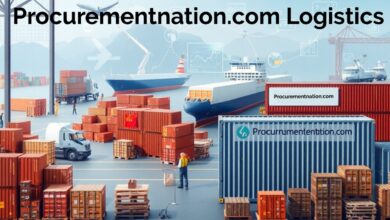All You Need to Know About Vendor Onboarding Process

Purchasing activities with suppliers have become an essential activity in many corporations in the dynamic business world of today. Whether large or small it can be almost certain that you use outside suppliers for the goods or services necessary for your business to run smoothly. But, the process of establishing a critical vendor onboarding strategy can be exhausting and time-consuming before you can reap hefty profits from such partnerships. This procedure may make or break your relationships with suppliers as well as lays the groundwork for productive partnerships. To make sure you’re positioning both you alongside your suppliers for success, we’ll go over five essential details of the vendor onboarding process in this post.
-
The Importance of a Well-Defined Onboarding Strategy
Having a well-defined and unambiguous onboarding process is essential when bringing on new suppliers to your company. Comparable to establishing a house’s foundation, everything else you create runs the danger of collapsing without a strong base. An effective onboarding approach serves as your road map, assisting your team in addition to your new vendors in building a collaborative partnership. It lessens the possibility of future misunderstandings or miscommunications by ensuring that everyone is in agreement from the start.
However, what does a clear onboarding plan actually look like? Fundamentally, it should describe every stage of the procedure, from first contact to complete integration. Information collecting, document exchanges, and training sessions, as well as performance requirements are all included in this. You can manage the frequently difficult job of adding a new vendor to your business with greater structure and predictability if you have all of these components clearly spelled out. But it’s not just about checking boxes; a smart strategy should also be adaptable enough to take into account various vendor types alongside special situations.
-
Gathering Essential Information and Documentation
Gathering necessary data and documentation is one of the most important parts of vendor onboarding. Although this stage may appear laborious, it is extremely necessary to build a solid, and cooperative, as well as profitable relationship with your providers. Consider it akin to getting to know your new business partner. After all, you wouldn’t form a partnership without having a fundamental understanding of the person you’ll be working with, would you? Here, the same idea is applicable.
Your vendor relationship will be built on the data you collect during this phase, which will guide everything from risk assessments to payment procedures. What sort of data should you be gathering, then? Get the vendor’s legal business name, contact data, tax identification number, and banking information for payments, at the very least. Don’t stop there, though. You may also need to gather documents such as financial accounts, licenses along with certifications, and insurance certificates, depending on the type of business you run in addition to the services the vendor will offer.
-
Establishing Clear Communication Channels
All relationships require communication, including the relationship you have with your vendors. To make sure that onboarding is a success, and onboarding often is a success, it’s absolutely essential to establish clear communication channels right away. Consider this: If you and your vendor cannot agree on the best way and when to communicate, how will you work harmoniously together? By having these channels early on, it’s easier to deal with any problems that might occur during or after the onboarding process, avoid confusion, and make sure important information does not go astray.
However, what do we mean when we talk about “communication channels”? Well, it goes beyond simply sharing phone numbers or email addresses. It involves developing a thorough communication strategy that specifies the many forms of information that will be disseminated. For more complicated connections, this might even involve common project management tools, frequent check-in meetings, or a specific point of contact on both sides.
-
Integrating Vendors into Your Systems and Processes
After gathering all the required data and setting up lines of communication, it’s time to address integration, one of the most important—and sometimes difficult—aspects of vendor onboarding. In a sense, here is where the rubber hits the road. It involves integrating your new vendor with your current workflows and systems so they may collaborate with your team and other partners without any issues. For your operations to run as smoothly and efficiently as possible, this must be done correctly.
If a vendor cannot successfully connect with your systems and procedures, they will not be of much use, even if they are the most competent. What does integration actually entail in practice, then? There are certain similar features, but it can vary greatly based on the function of the vendor and the type of your firm. The vendor may need to be set up in your accounting or procurement systems, have access to pertinent databases or collaboration tools, or have your IT infrastructure configured to support their services.
-
Monitoring and Evaluating Vendor Performance
After all the documentation is completed and the systems are connected, the vendor onboarding process continues. In fact, it might be argued that the actual job starts here. An essential continuous activity that begins at the outset of your engagement is tracking and assessing vendor performance. It’s not about micromanaging your vendors or being too critical of them. Instead, it’s about making sure the collaboration is providing the value you anticipated and seeing any potential improvement areas early on. Consider it a wellness check for your relationships with your vendors; consistent monitoring enables you to identify and resolve minor concerns before they become major ones.
However, what precisely ought to be under observation? Although it depends on your connection with the provider, there are a few standard criteria to take into account. These might include such aspects as the performance indicators like on-time delivery frequency, manufacturers’ quality of the products or service providers’ quality of the services rendered, communication reactiveness to clients, and obedience to agreed contractual dictates. The adjustments of these metrics should be set before the start of working with the vendor so that both parties know what is considered successful.
Read More: Procurementnation.com Logistics Solutions: Streamlining Your Supply Chain
Conclusion
One of the most important steps in creating solid, fruitful partnerships with your suppliers and service providers is the vendor onboarding procedure as it’s a digital transformation in procurement. You can create the conditions for fruitful collaborations that add value to your company by concentrating on these five crucial areas: creating a clear plan, obtaining necessary data, creating lines of communication, integrating suppliers into your systems, and keeping an eye on performance.



